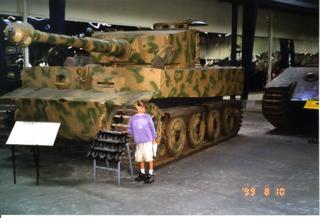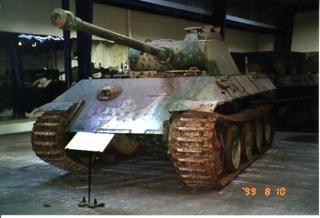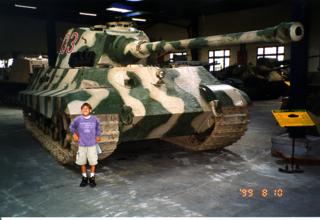Photos to illustrate a previous post
In the Cap'n's previous post about the military and preparedness, he talked about the M-4 Sherman. Here are a few photos to help with the illustration.

This is an M-4 Sherman tank that was on display outside of the Battle of the Bulge Museum in Bastogne, Belgium. Just your basic M-4 Sherman with a basic low-velocity75mm main gun.

This is a German Mark VI Tiger tank (and my progenity) with a high-velocity 88mm main gun. As you can see, it looks much more heavily armed than the M-4 Sherman. This tank is located in the French Armor Museum in Saumur, France. Notice the thick, vertical armor. Thick is good, but sloped is better. This was the first version of the Tiger and although it had it's problems, when it showed up on the battlefield, the Shermans ran away.

This is a German Mark V Panther tank with a high-velocity75mm main gun. As can be seen, the German tank has sloped armor to deflect shots. The 75mm main gun is much longer than the M-4 Sherman main gun. This means that it has a higher muzzle velocity which translates to more penetrating power which is the difference between having your shot ping harmlessly on the enemy tank and watching him burn while the sound of secondary explosions fill the air.

This is the German Mark VII King Tiger (and yet again, my progenity) with an ultra-high velocity 88mm main gun. This tank had it all, sloped armor, high-velocity main gun, etc. It ate Shermans for lunch. Luckily, it was so heavy and large that there were not many on the battlefield.
The Panther is widely considered the best German tank of World War II. It had sloped armor which prevented enemy shot penetration, a high-velocity 75mm main gun which could defeat anything the Allies had (until the arrival of the Pershing) and good mobility. Unfortunately for the Germans, they didn't have an unending supply. Yet again, the side with the best logistics usually wins the battles.

0 Comments:
Post a Comment
<< Home